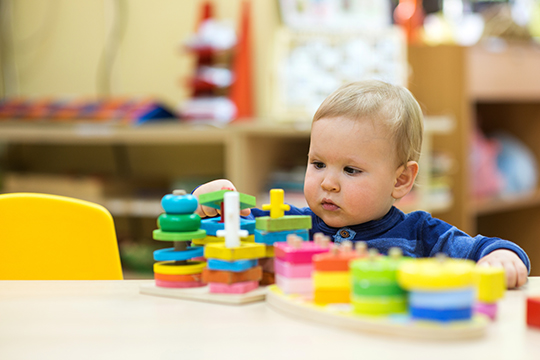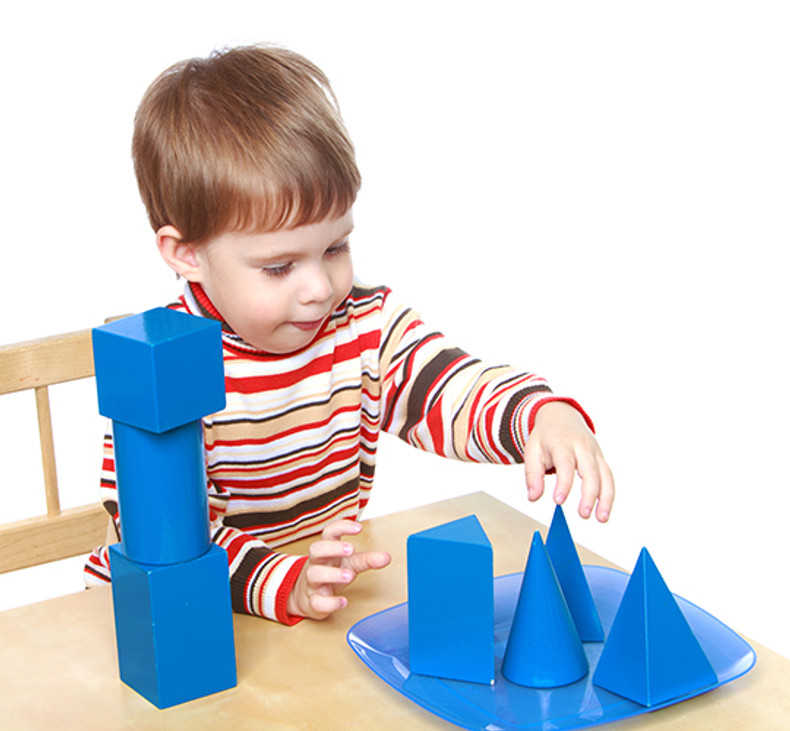
As another school year begins and my work with teacher preparation winds down and their own classroom preparations begin, I think about the questions that I know new teachers will soon ask, “What’s the best way to set up my classroom? How will I ever remember all these lessons? How do I normalize my classroom?” Of course, their questions are all about the environment, because this is the first place we begin. Montessorians believe that children learn through the prepared environment, and if children are not engaged, we as teachers need to look at the environment we have prepared.
As part of my own preparation for being a classroom teacher I learned the sequence of the materials, the developmental levels, and how to make the “match” to pique a child’s interest. I felt confident in my abilities with presentations, and I knew that children responded well to my lessons. Children in my classroom were independent, creative problem solvers. They loved to learn and were happy in their work.
Then I had my own child. In full disclosure, I became pregnant during my Elementary internship. While I vividly remember the planning, writing, and work that I did during my practicum, I remember very little about my actual pregnancy; and true to form, my labor pains began while I was setting up my classroom for the new year! My poor assistant literally stuffed the storage closets with whatever was still on the floor when I went into labor!
I don’t know if becoming a parent after taking Montessori training is better or worse, but I can tell you, it does make you more observant. I noticed things during my son’s development that most parents may not notice. Like the time he was crawling down the hallway, happy as could be, until he came to the open front door. Being born mid-August in Texas, in all of my son’s recollection the front door had been closed. On this date it was a beautiful spring day, and I had opened the front door to bring in the glorious sunshine, while keeping the storm door closed. This was what my son discovered to his dismay as he crawled down the hallway.
I watched as my boisterous son changed into a nagging, complaining child right before my eyes. “Ahh, ahh, ahh!” He had just been so happy, what happened? So, I decided to stay seated and watch. (Ok, I know this is not the normal reaction of a mother who hears her child complaining, but I knew there was nothing physically wrong that needed my attention!) During the next few minutes, I watched as he crawled up to the door, and with great determination, pushed the door closed, and proceeded back toward me just as happily as before! Wow! His sense of order had been disturbed by the open door, and by closing it, everything was right with the world again! (Again, I realize this might be an unusual reaction for a parent, but this is how the Montessori lens allowed me to “see” what the natural behavior of my child was.)
Flash forward almost a year and I decided that we could work on some transfer activities. I set up an exercise on a tray with some rice and a scoop and proceeded to give him a lesson. He watched dutifully and then I invited him to repeat the activity. He picked up the scoop and placed it in the rice. As he transferred the rice from one bowl to the other, a little bit of rice fell from the scoop and onto the floor. No problem, I kept watching. He took the next scoop and this time he didn’t get as much rice into the bowl as there was now on the floor. Again, no problem, I kept watching. The third time, he literally scooped up the rice and poured it on the floor! OK, hmmmmm!!, I had a decision to make. Was I a Montessorian or was I a mom who now had a messy floor? As I looked at the rice all over the ground, I made my decision and, in my best, kindest Montessori voice said, “I can see you are not ready for this lesson at this moment,” and removed the activity and began sweeping up the rice.
As I swept, I noticed my son’s attention. I gave him the dustpan and showed him how to sweep the pile of rice into the pan and then I dumped it out again. He took the large (for him) whiskbroom and began to sweep the rice into a pile. Again, he swept it into the dustpan and dumped it out again. I stood back and watched as my son spent almost 20 minutes absorbed in this task; sweeping, dumping, sweeping, dumping, sweeping, dumping. I came to the realization that what I thought he needed a lesson on at that moment was not what he was interested in. It truly didn’t matter what the developmentally appropriate activity was if he wasn’t interested in it! Once I had found something he was interested in all I had to do was get out of the way.
I understand the questions that new teachers have, and I still answer them to the best of my ability; but I also know something else. As a teacher educator we give lessons in sequential order and examine developmental levels. We discuss sensitive periods and the best way to take advantage of the opportunity, because this is how we think we can get a handle on what is going on with the child. But the truth is giving freedom within a prepared environment is the key. FromThe Absorbent MindDr. Montessori states,
“This change, which creates almost a uniformity of type, doesn’t occur gradually, but appears all of a sudden. In any given child, it follows invariably upon a spell of deep concentration on some activity.”
It behooves us at the beginning of the school year to remember the subsequent words of Dr. Montessori,
“But when the attractions of the new environment exert their spell, offering motives for constructive activity, then all these energies combine and the deviations can be dispersed. A unique type of child appears, a “new child”; but really it is the child’s true “personality” allowed to construct itself normally.”

